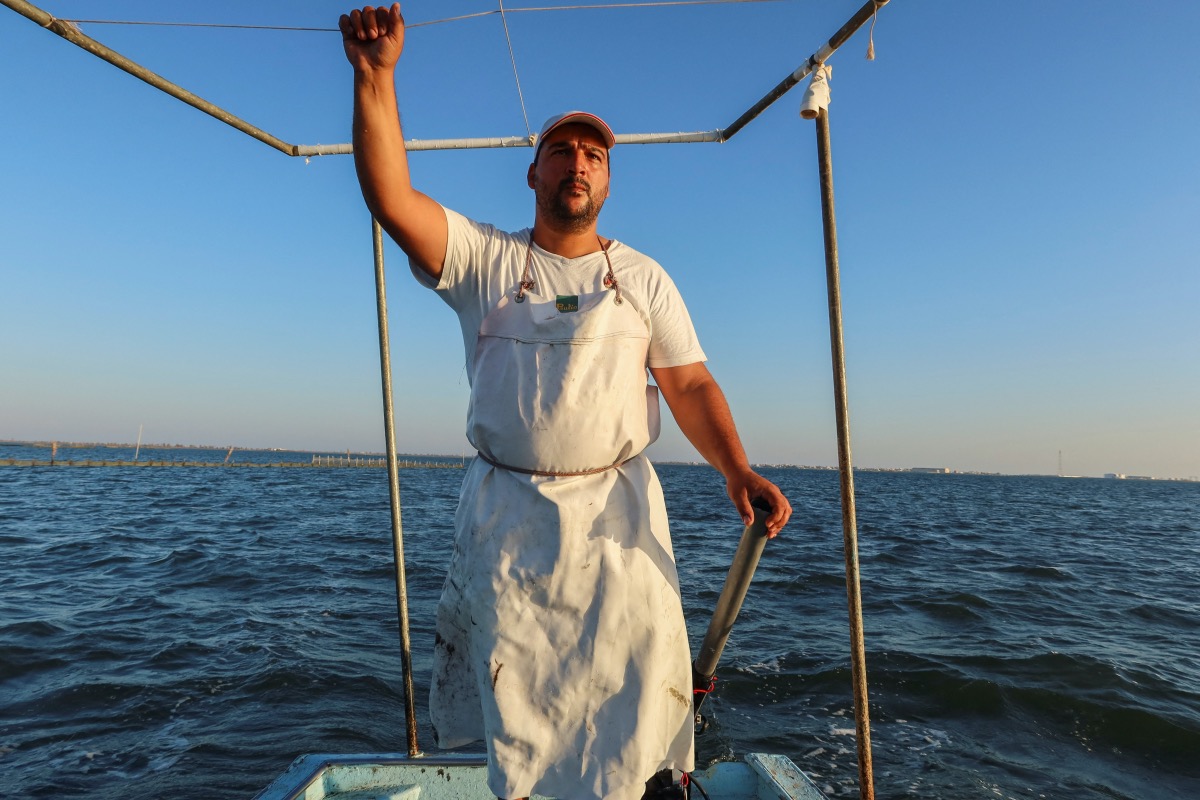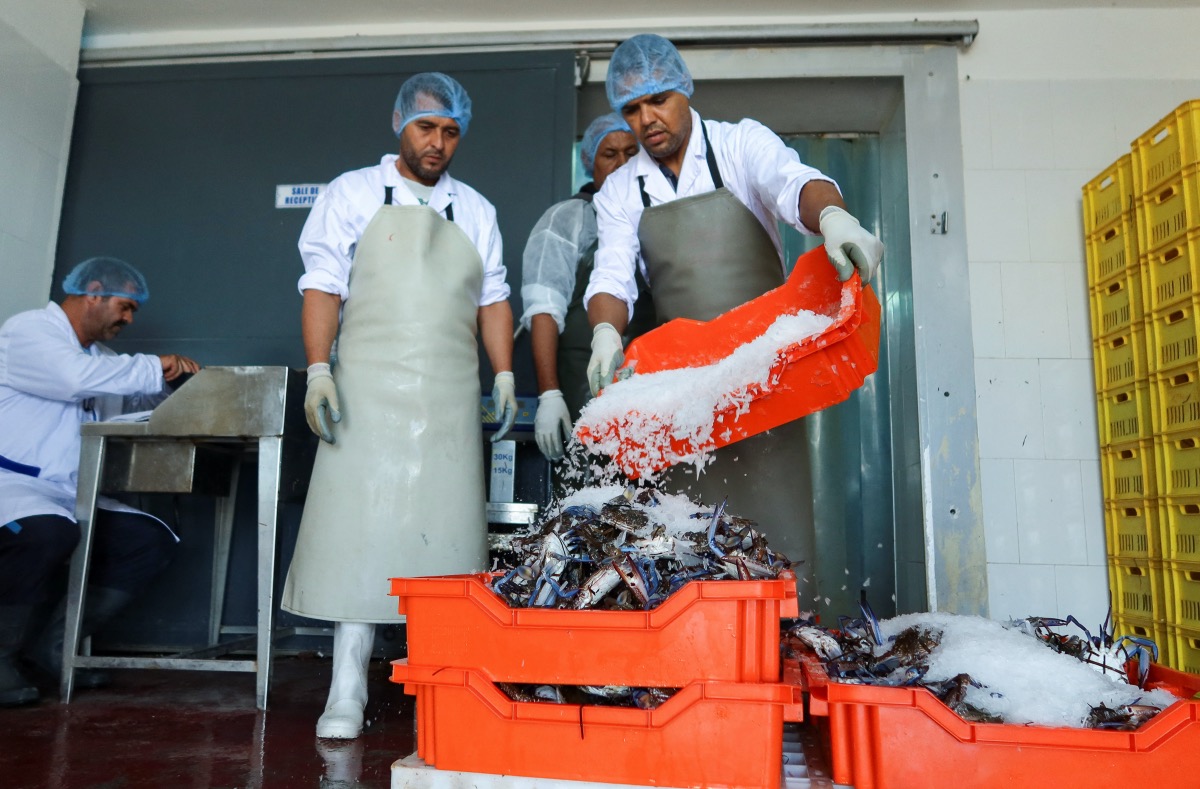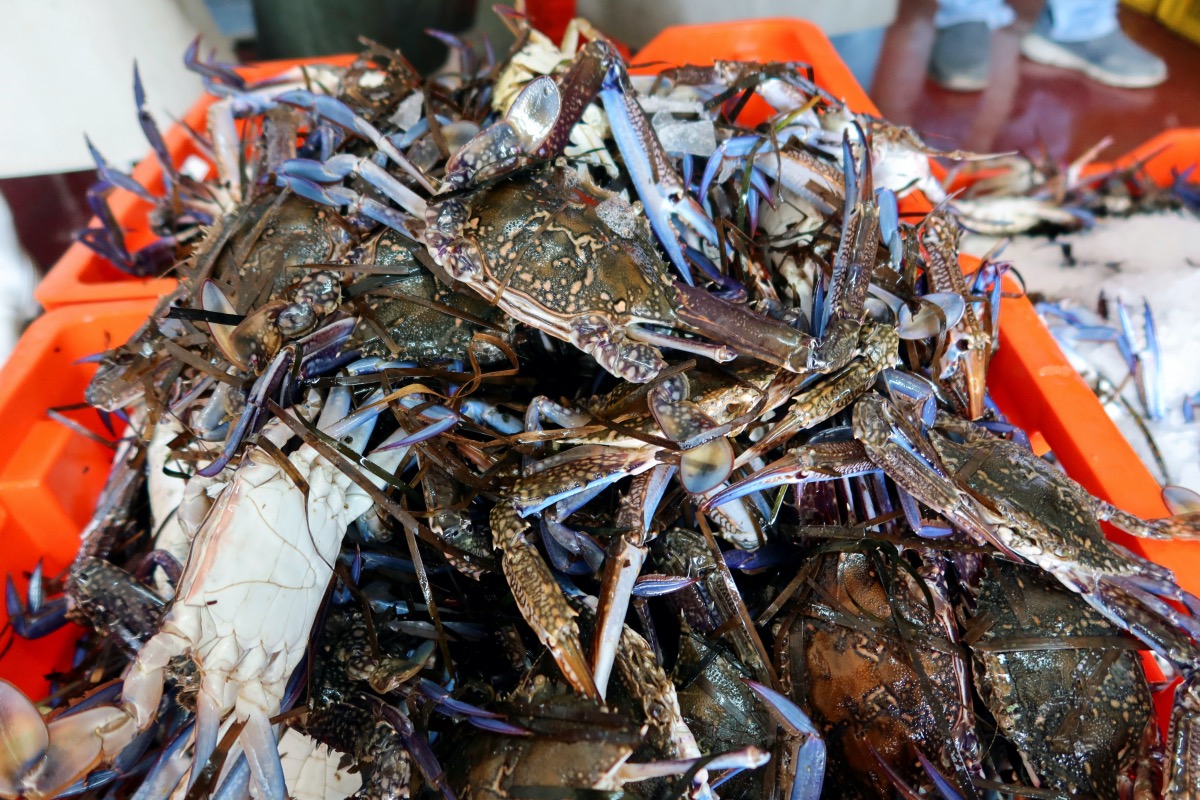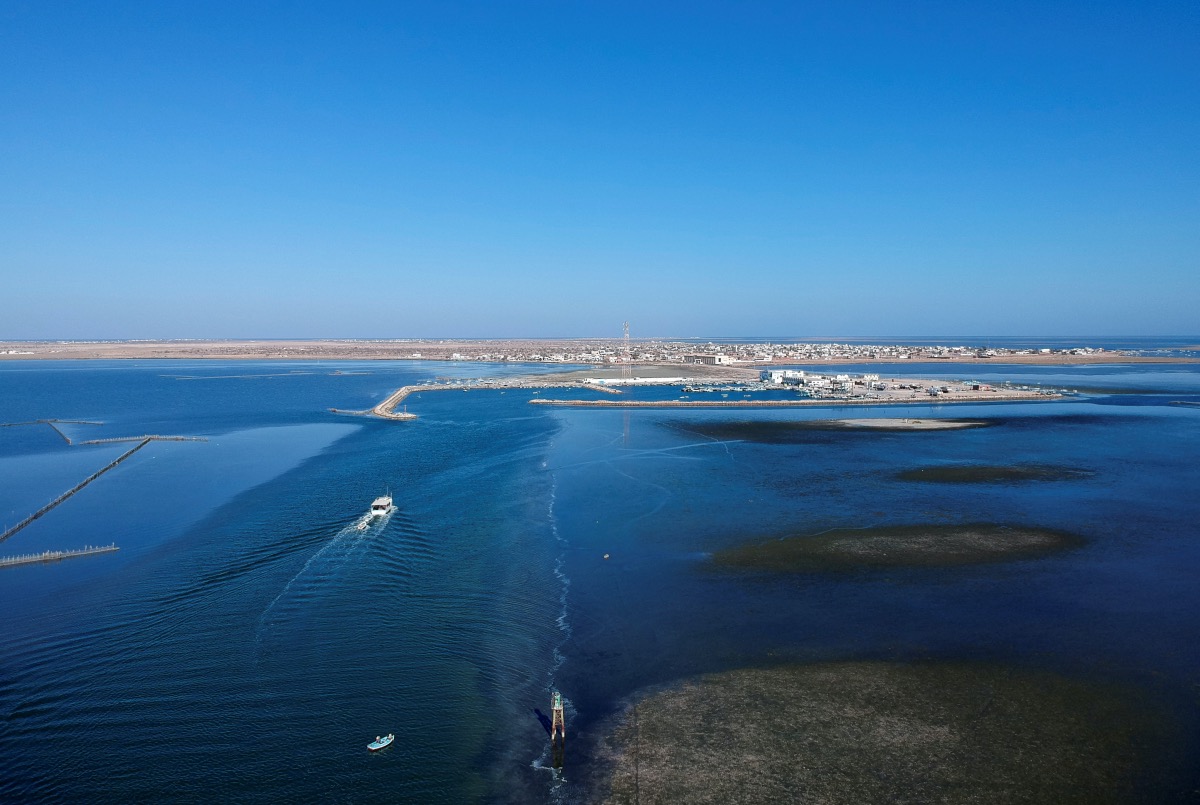
GLORIA DICKIE and JIHED ABIDELLAOUI, of Reuters, report on the impact of Mediterranean heatwaves…
Kerkennah Islands, Tunisia
Reuters
A decade ago, Tunisian fisherman Ahmed Chelli’s nets bulged with fish and octopus that he sold at the local market in the Kerkennah islands. Today, he pulls up only “ISIS” – the name locals have given to the blue crabs that have invaded their fishing grounds in the fast-warming waters of the Mediterranean.
“The fisherman…instead of finding fish to provide an income, he finds something that cuts his nets,” Chelli complained.

Fisherman Ahmed Chelli stands on his fishing boat in the Mediterranean around Tunisia’s Kerkennah Islands, off Sfax, Tunisia, on 23rd October. PICTURE: Reuters/Jihed Abidellaoui
For more than 70 days this summer, a marine heatwave cooked the waters of the western Mediterranean.
It was the worst swelter for the western part of the basin in the last four decades, said marine ecologist Joaquim Garrabou at Spain’s Institute of Marine Sciences, who monitors temperature gauges in the sea’s near-coastal waters.
“We’ve been witnessing marine heatwaves during the last 20 years. Almost every year, some area of the Mediterranean suffers.”
– marine ecologist Joaquim Garrabou at Spain’s Institute of Marine Sciences.
Temperatures climbed higher, and the heatwave lasted longer, than any other to hit the waters west of Sicily since record-keeping began in 1982, Garrabou said, based on preliminary findings from his analysis, shared exclusively with Reuters.
“We’ve been witnessing marine heatwaves during the last 20 years,” said Garrabou, who’s also coordinator of the T-MEDNet marine monitoring network. He and his colleagues have found that about half of the worst heatwaves on record in the entire basin have hit since 2015.
“Almost every year, some area of the Mediterranean suffers,” he said.
Measurements taken by European Space Agency satellites show that, from June through September, the waters off north Africa and south-west Europe were two to five degrees Celsius above the 1985-2005 daily averages. Temperatures peaked at nearly 31 degrees Celsius in some parts.
By September, populations of sponges, sea-stars, fish, and mollusks were dying en masse in the waters off France and Spain. Corals bleached to bone white.

A worker throws ice on freshly caught blue crabs, at a seafood exporting company “L’ocean de peche”, in Al Ataya Port, in Kerkennah Islands, off Sfax, Tunisia, on 23rd October. PICTURE: Reuters/Jihed Abidellaoui
Around Tunisia, the underwater warmth encouraged reproduction among invasive species such as the blue crab, said Hamdi Hached, an environmental consultant in Tunis at the Friedrich Naumann Foundation for Freedom.
The crabs likely first arrived from the Indo-Pacific via ship ballast water, and were first documented in the Mediterranean in 1898. But, with the last decade of warming, the population has exploded – eating and outcompeting valuable native species.
With blue crab larvae thriving at water temperatures around 30 degrees, there’s no end in sight.
Hached said the pincered crustacean’s “ferocity and the destructive ability” has inspired the caliphate-themed nickname “ISIS” by the fishermen of the Kerkennah islands – which lie about 20 kilometres off the northern coast of Tunisia.
“It has a very large appetite to devour all the creatures around it, becoming a curse on the fishermen in the region.”
While tourism drives most of the sea’s economic activity, worth $US450 billion in 2017 according to the World Wildlife Fund, there are millions who rely on the sea’s bounty for their livelihoods.
But as climate change makes the Mediterranean among the world’s fastest warming seas – with temperatures rising about 20 per cent faster than the global ocean average – that bounty is under threat.
The rapid warming is due partly to the fact that the Mediterranean is a relatively shallow and contained basin. With an area of about 2.5 million square kilometres, it is a “climate change hotspot because it’s a small sea,” Garrabou said.
There are few connections between the sea and the Atlantic Ocean to the west, so there are “not a lot of ways out for warm water,” he said. The overall water temperature is now 0.4 degrees higher on average than it was 30 years ago, data show.
Acute marine heatwaves can form when warm air temperatures coincide with stable ocean conditions – when there is less mixing between the colder, deeper layers of water and the warmer surface layer.
This summer, southern Europe suffered blistering temperatures on land, which scientists said provided the perfect set-up for an ocean heatwave to unfold in the waters, as the ocean absorbs excess heat in the atmosphere.

Blue crabs are placed in a box at a seafood exporting company “L’ocean de peche”, in Al Ataya Port, in Kerkennah Islands, off Sfax, Tunisia, on 23rd October. PICTURE: Reuters/Jihed Abidellaoui
The Mediterranean isn’t the only sea in hot water.
A 2016 marine heatwave along Chile’s southern coast caused huge algae blooms that wiped out fish farms and cost the aquaculture industry some $US800 million, said scientist Kathryn Smith with the Marine Biological Association of the United Kingdom.
Another heatwave in Australia’s Tasman Sea lasted more than 250 days between 2015 and 2016, triggering disease outbreaks on shellfish farms.
As the world warms, marine heatwaves are expected to become more frequent, according to the UN Intergovernmental Panel on Climate Change. Already, climate change has helped to drive the annual number of ocean heatwave days up 54 per cent in the period from 1925 to 2016, a team of international scientists found in 2018.
Scientists say the Mediterranean could suffer at least one long-lasting, severe heatwave every year between now and 2100, according to 2019 research in the journal Climate Dynamics.
We rely on our readers to fund Sight's work - become a financial supporter today!
For more information, head to our Subscriber's page.
Blue crabs aren’t the only animals invading the warmer Mediterranean. Nearly 1,000 alien species have entered the sea, according to a 2021 report by WWF, mostly by hitching a ride on ships. But warmer temperatures have made it easier for some stowaways to establish populations.
Today, about 10 per cent of these species are considered invasive, meaning they’re likely to cause environmental or economic harm.
The bright yellow rabbitfish, for example, overgrazes seagrass beds, destroying plants that provide a key habitat for local species and sequester carbon.
Though economists have yet to account fully for the impacts of marine heatwaves, recent experience has many concerned.
In waters off Greece, where the coastal zone accounts for about 69 per cent of the national economy, a marine heatwave last year ravaged the country’s mussel harvest, halving production and wiping out 80 per cent of the baby mussel seed for this year.
Mediterranean fisheries are valued at over $US3.4 billion, a 2022 IPCC report said, with more than 76,000 fishing vessels trawling the cerulean waters for anchovy, bluefin tuna, and red mullet in 2019.
The impact of such heatwaves is especially keen in North Africa where many “communities are involved in small-scale fisheries,” said Mauro Randone, who manages WWF’s Mediterranean program focused on the regional economy. “They are one of the most impacted sectors.”

Boats enter Al Ataya Port in Kerkennah Islands, off Sfax, Tunisia, on 23rd October. PICTURE: Reuters/Jihed Abidellaoui
North African countries have begun strategizing for how they’ll adapt to climate change, said Naguib Amin who leads Clima-Med, an EU-funded climate action group launched in 2018.
Speaking at the COP27 climate summit in Egypt, Amin told Reuters the group was working to develop climate action strategies for cities along the Mediterranean’s southern coast.
Europe’s coastal countries face similar impacts from rising temperatures but “the difference is the ability of these countries financially,” he said.
African nations hope COP27 leads to more funding for projects that will help their communities adapt to the warming of the seas, he said.
On Tuesday last week at COP27, European banks announced a partnership with the Union for the Mediterranean, which comprises 42 countries, to provide grants and capital spending over eight years to help close a 6-billion-Euro investment gap to support nations on the sea’s southern coast.
But that effort will take time to build momentum.
For now, Tunisia’s fishermen have had to find a solution to losing much of their traditionally harvested species: fishing the blue crab commercially.
In May 2021, blue crab exports from the country were valued at $US7.2 million – more than double the value of the same time period in 2020, according to the Food and Agriculture Organization.
And there are now more than 30 factories processing crabs – with two of them located in the Kerkennah islands.
“Fishermen now want to work with the blue crab,” said Habib Zrida, owner of a fishing company that now exports the crabs. “It has become a source of livelihood, after it was a curse.”






